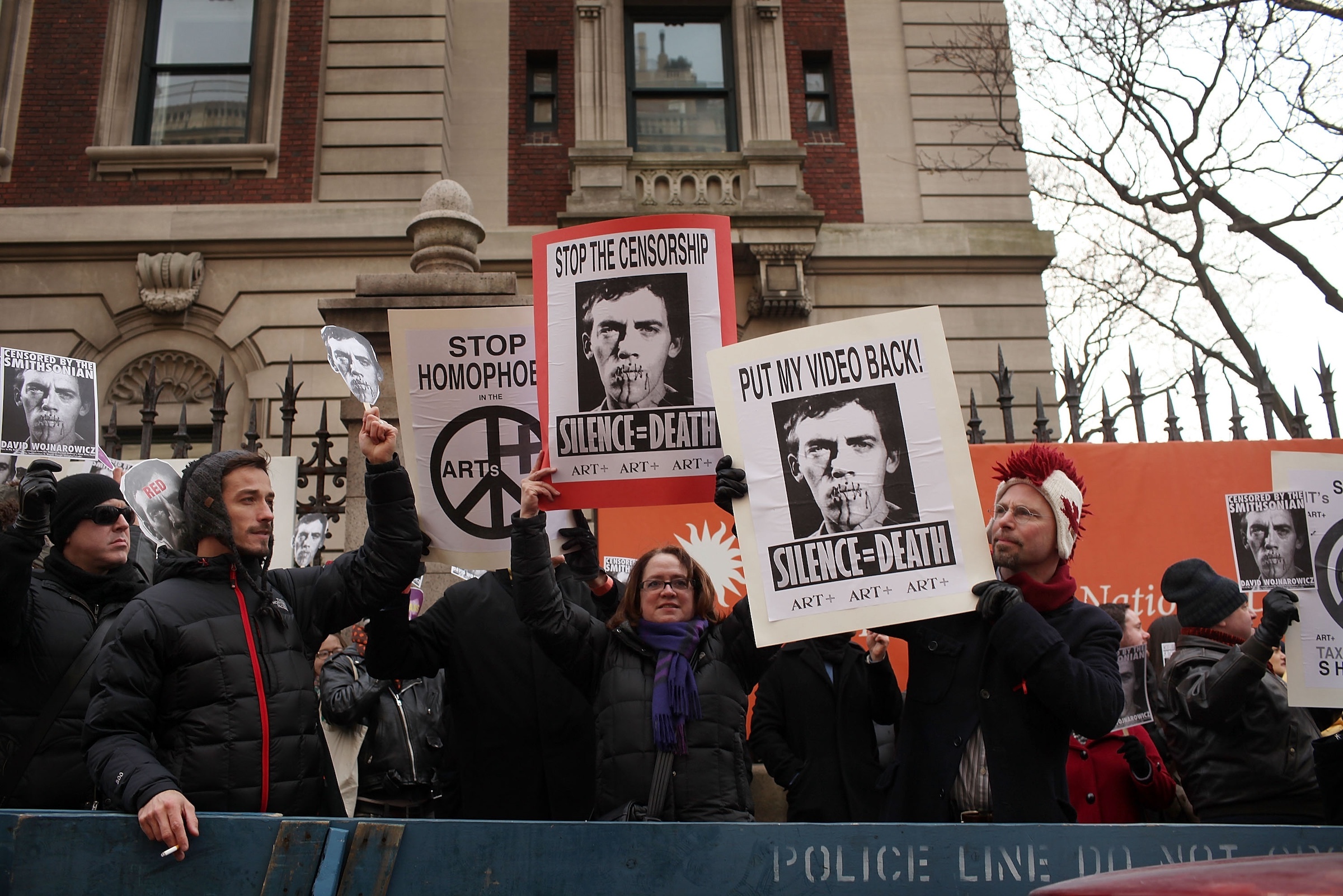Nearly 65% of art museum directors say they’ve experienced pressure not to show an artwork or present an exhibition at least once in their careers, according to a survey conducted last summer by Artists at Risk Connection (ARC), PEN America, and the Association of Art Museum Directors (AAMD). The Censorship Horizon: A Survey of Art Museum Directors, published today, January 14, depicts a larger web of pressures either interfering or threatening to interfere with curatorial freedom in the United States in recent years.
The survey’s findings are derived from the responses of 95 AAMD members — museum directors working in independent and university- or government-owned institutions that have a minimum annual operating budget of $2 million. Nearly 75% of them concurred that censorship is currently at least “somewhat of a problem,” while 55% agreed that it’s a “much bigger problem for museums today” compared to 10 years ago. Notably, zero respondents reported that it was less of a problem now compared to a decade ago.
While museum directors often have the final say over what artworks can be exhibited, the policy recommendations section of the survey suggests that there are other stakeholders, such as board members, who have that power in certain institutions.
Cases of exhibition cancelations, curatorial alterations, and removal of artworks from displays and exhibitions have sprouted nationwide amid Israel’s ongoing attacks on Palestine, restrictive legislation and book bans, and continued attacks on abortion access and LGBTQ+ rights and healthcare.
Over the last 15 months, artists in the US and beyond have had artworks withdrawn and opportunities rescinded over their support of Palestine, as outlined in Hyperallergic’s recent joint report with Jewish Currents. PEN America, one of the three entities that published the survey, faced criticism and calls for organizational boycotts in 2024 for its removal of Palestinian-American writer Randa Jarrar from a PEN event spotlighting vocal ceasefire opponent and actor Mayim Bialik, and for the organization’s response to the attacks on Gaza. Former CEO Suzanne Nossel stepped down from PEN America at the end of October, effective January 7.
When it comes to defining and qualifying censorship, the survey responses did not paint a general consensus; however, they did depict broad agreement on certain scenarios. Presented with hypothetical reasons for an artwork’s removal or omission, respondents answered as follows to the question of whether the scenario constituted an instance of censorship:
- 82% agreed that the artwork’s removal was a case of censorship if the reason was the artist’s race or ethnicity, while 80% agreed if it was the artist’s sexuality or gender identity
- 79% agreed if the reason was an artist’s stance on a political matter; 72% agreed if the work was removed because it was deemed “too political”
- 74% agreed if the reason was a board member’s concerns or direction based on potential offense to the audience; only 41% said they considered a board member’s opinion regarding the quality of the artwork
- 67% agreed if someone found the particular artwork offensive, whereas 34% agreed if the reason was that museum visitors “may not appreciate the work”
- 67% agreed on the basis of legislation prohibiting the artwork in question
- 49% agreed in the case of the artwork not being appropriate for children
- 5% of respondents found none of the above to be examples of censorship
Regarding where exactly the pressure to alter a curatorial vision is coming from, the respondents reported varying sources — 41% expressed strong concern about pressure from Republican officials, while only 3% expressed the same sentiment about Democratic officials. Pressure from the museum board and institutional donors were of near-equal concern at 13% and 12% respectively. Only 11% of respondents expressed concern about pressure from the museum’s staff, and 7% from members of the public.
Works by Palestinian artists, works with pro-choice themes, art critical of Biden or Trump or law enforcement, and artworks critical of Christianity are likely to elicit the most complaints among a variety of options the survey asked respondents to consider. As illustrated by a chart in the survey, also reproduced below, 18% percent of respondents said their museum would receive complaints over exhibiting Palestinian artists, regardless of whether they were vocally pro-Palestine, while 13% reported the same if they exhibited Israeli artists.
Apparently, this goes as far as affecting any artist who has shown public support for Palestine, as one respondent described how “several years ago we were pressured by one donor not to acquire a work by [a particular artist] because of her political statements about Palestine.”
It’s worth noting that in spite of many US museums facing protests based on institutional ties to climate change, the fossil fuel industry, mass incarceration, the opioid crisis, military weaponry production, and violence in Gaza and the Occupied West Bank, the survey notes that “none of the museum directors mentioned protest movements in their qualitative responses” regarding censorship.
The survey also addressed the blurry relationship between curation and self-censorship, as in pre-emptively omitting certain content out of fear that it could cause negative reactions or offend audiences.
Perhaps the most critical finding was that among the 95 respondents, 90% of them noted that their museum did not have any existing written policy surrounding censorship, with some explaining that they handled instances on a case-by-case basis with curators and the museum board. The 10% that did have written policy appeared to lack a definitive consensus around the parameters.
“Having a written censorship policy — a document to set out procedures by which an art museum responds to formal or informal challenges, including under what conditions it might take action — is a vital baseline step towards inoculating against encroaching threats,” a portion of the survey’s write-up on the lack of existing museum policy reads.
“Perhaps even more than fighting against a case of censorship, it can serve as a protection strategy against it.”

